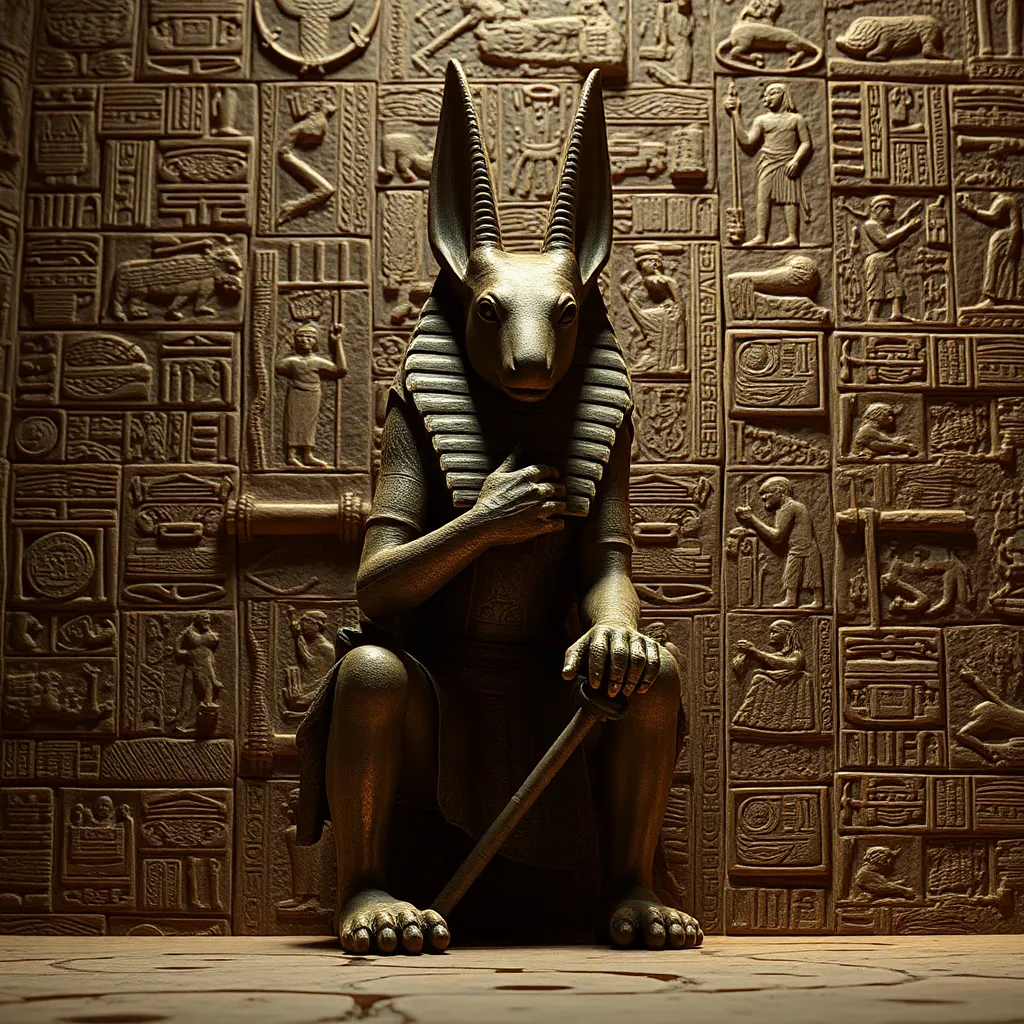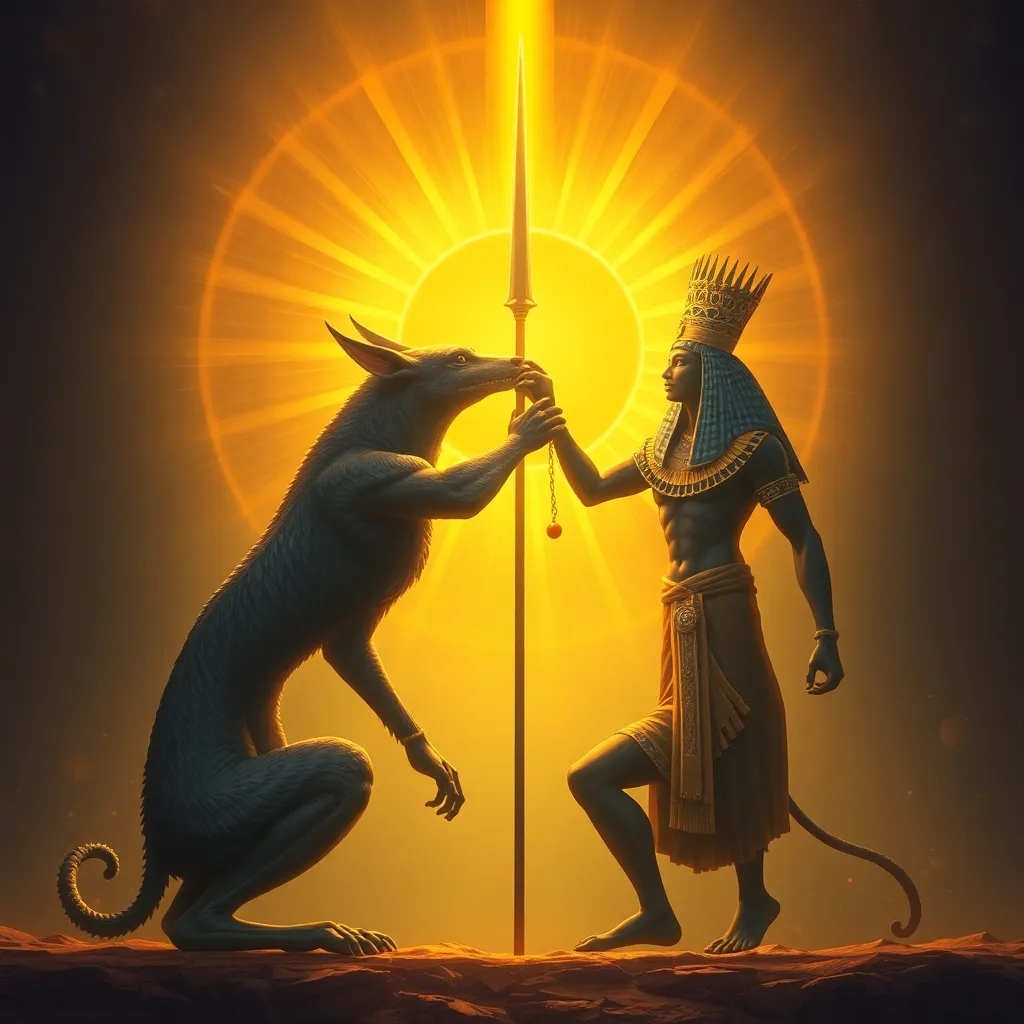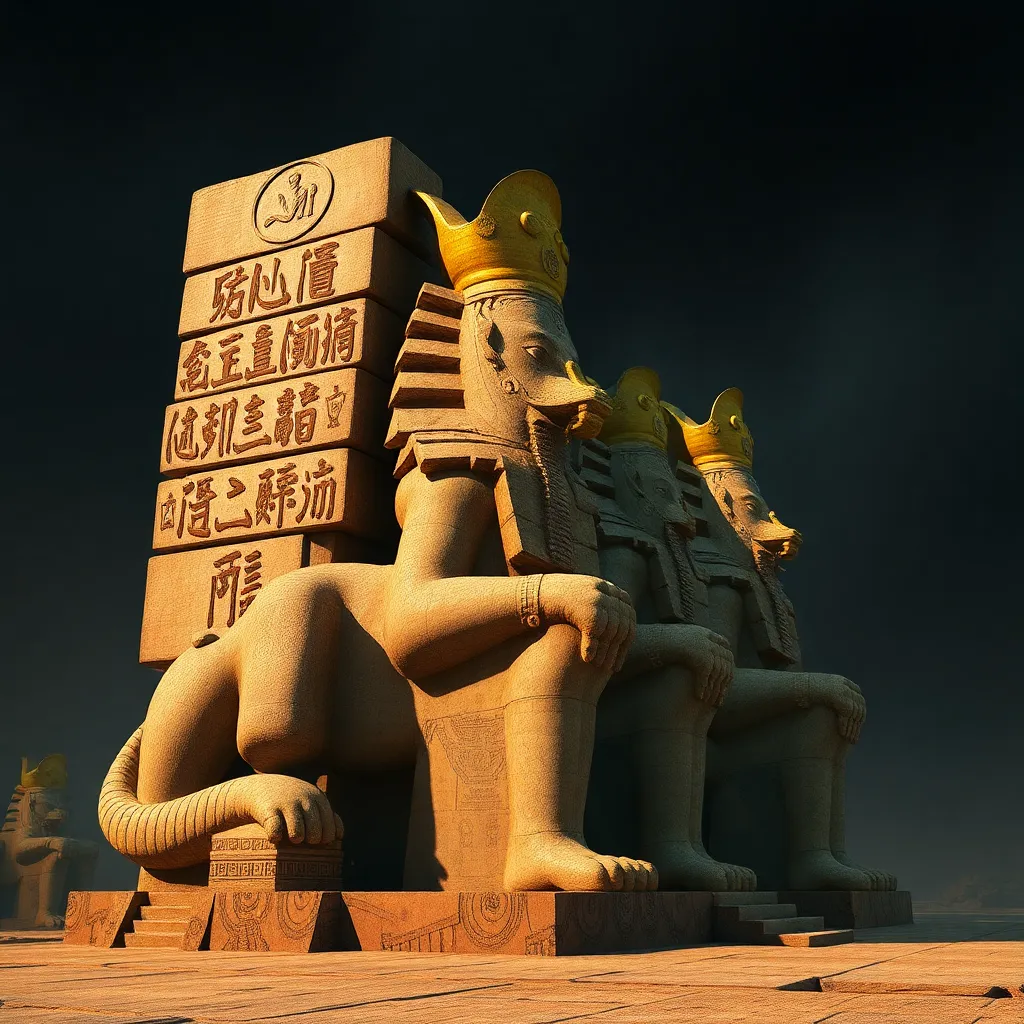Anubis in the Pyramid Texts: Unveiling the God’s Role in Ancient Texts
I. Introduction
Anubis, the enigmatic jackal-headed deity of ancient Egypt, has long captivated scholars and enthusiasts alike with his profound significance in Egyptian mythology. Often associated with mummification and the afterlife, Anubis played a crucial role in the spiritual beliefs of ancient Egyptians. This article delves into the Pyramid Texts, a collection of some of the oldest religious writings in the world, to explore Anubis’s pivotal role within these ancient texts.
The Pyramid Texts, dating back to the Old Kingdom (circa 2686–2181 BCE), served not only as a guide for the deceased but also as a reflection of the complex beliefs surrounding death and the afterlife in ancient Egypt. This article aims to explore the multifaceted role of Anubis within these texts, highlighting his importance in both funerary practices and the broader context of ancient Egyptian spirituality.
II. Historical Background of the Pyramid Texts
A. Origins and dating of the Pyramid Texts
The Pyramid Texts are primarily found in the burial chambers of the pyramids at Saqqara, most notably in the pyramids of Unas, Teti, and Pepi I. These texts are believed to have originated around 2350 BCE, making them some of the earliest examples of religious literature in human history. They were inscribed on the walls of royal tombs and served as a means to protect the pharaohs in their journey to the afterlife.
B. The purpose of the Pyramid Texts in ancient Egyptian funerary practices
The primary purpose of the Pyramid Texts was to ensure the safe passage of the deceased into the afterlife. These texts contained spells, hymns, and prayers designed to ward off evil and provide guidance, thereby reflecting the ancient Egyptians’ beliefs about death and resurrection. The texts also emphasized the importance of the individual’s actions in life, which influenced their fate in the afterlife.
C. The significance of religious texts in the context of the afterlife beliefs
In ancient Egyptian culture, religious texts played a crucial role in shaping the beliefs surrounding the afterlife. They served as a bridge between the living and the dead, providing instructions and protections for the deceased. The Pyramid Texts, in particular, are significant as they highlight the intricate relationship between the gods, the pharaohs, and the afterlife.
III. Anubis: The God of the Afterlife
A. Attributes and symbolism of Anubis in ancient Egyptian mythology
Anubis, often depicted as a jackal or a man with a jackal’s head, symbolizes protection, mummification, and the afterlife. He is closely associated with the embalming process, overseeing the rituals to ensure the deceased’s safe passage to the afterlife. His black color symbolizes fertility and rebirth, reflecting the fertile soil of the Nile, which was integral to the ancient Egyptians’ agricultural society.
B. The evolution of Anubis’s role from the Old Kingdom to the New Kingdom
Anubis’s role evolved over time; initially, he was considered the primary deity associated with the dead. However, as Osiris gained prominence as the god of the afterlife, Anubis’s role transformed into that of a guide and protector, serving alongside Osiris in the judgment of souls. This evolution highlights the dynamic nature of ancient Egyptian religious beliefs.
C. The relationship between Anubis and other deities associated with death
- Osiris: The god of resurrection and the afterlife, Osiris became the primary deity associated with the judgment of souls.
- Isis: Anubis is often depicted in connection with Isis, the goddess who helped resurrect Osiris, emphasizing the collaborative nature of their roles in the afterlife.
- Thoth: The god of wisdom and writing, Thoth is sometimes portrayed as recording the results of the Weighing of the Heart ceremony, further intertwining with Anubis’s duties.
IV. Anubis in the Pyramid Texts: Key Passages and Themes
A. Analysis of specific texts mentioning Anubis
Within the Pyramid Texts, Anubis is frequently mentioned in passages that emphasize his protective and guiding roles. For example, in Pyramid Text 123, Anubis is invoked to safeguard the deceased as they navigate the dangers of the afterlife. These passages underscore his importance in ensuring safe passage and protection from malevolent forces.
B. Themes of protection, guidance, and judgment in Anubis’s depictions
The themes surrounding Anubis in the Pyramid Texts revolve around:
- Protection: Anubis is often called upon to shield the deceased from harm.
- Guidance: He is depicted as guiding souls through the underworld, ensuring they reach their destination safely.
- Judgment: Anubis plays a crucial role in the judgment process, weighing the hearts of the deceased to determine their fate.
C. The ritualistic context of Anubis’s appearances in funerary rites
Anubis’s involvement in funerary rites is evident in the rituals performed during mummification and burial. His figure is often present in tomb paintings, symbolizing his active participation in the protection and guidance of the deceased during their transition to the afterlife.
V. The Role of Anubis in the Mummification Process
A. Anubis’s association with embalming and the mummification process
As the god of embalming, Anubis is intrinsically linked to the mummification process. His presence was believed to protect the body during its preparation for the afterlife. The rituals performed during embalming often included invocations of Anubis to ensure the deceased would be safeguarded in their journey.
B. Rituals and prayers invoking Anubis during funerary preparations
Various rituals involved prayers and offerings to Anubis, asking for his blessing and guidance. These invocations were critical for the deceased’s successful transition to the afterlife and were often performed by priests trained in the sacred rites of mummification.
C. The significance of Anubis’s role in ensuring safe passage to the afterlife
Anubis’s role in the mummification process highlights his importance in ensuring that the deceased could safely navigate the challenges of the afterlife. His protective nature reassured the living that their loved ones would be cared for after death.
VI. Anubis and the Weighing of the Heart
A. Description of the Weighing of the Heart ceremony
The Weighing of the Heart ceremony is a critical component of ancient Egyptian beliefs about the afterlife, where the heart of the deceased is weighed against the feather of Ma’at, the goddess of truth and justice. This ceremony symbolized the judgment of the deceased’s soul, determining their fate in the afterlife.
B. Anubis’s role as the guide and judge during the afterlife judgment
In this judgment process, Anubis is depicted as both the guide and the judge. He weighs the heart of the deceased, ensuring the process is fair and just. His presence in this pivotal moment underscores his role as the protector of the dead, overseeing their fate.
C. Implications of the weighing ritual for the deceased’s fate
The outcome of the Weighing of the Heart determined whether the deceased would be granted eternal life or devoured by Ammit, the soul-eating demon. Thus, Anubis’s involvement was crucial, as he ensured that the deceased faced a just judgment.
VII. Interpretations and Legacy of Anubis in Ancient Texts
A. Scholarly interpretations of Anubis’s role in the Pyramid Texts
Scholars have extensively studied Anubis’s role within the Pyramid Texts, interpreting his significance as a protector and guide in the afterlife. His evolving relationship with Osiris reflects broader shifts in ancient Egyptian religious beliefs and practices.
B. The influence of Anubis on later Egyptian texts and traditions
Anubis’s legacy extends beyond the Pyramid Texts, influencing later funerary texts such as the Coffin Texts and the Book of the Dead. His character continued to symbolize protection and guidance, reinforcing his status as a central figure in ancient Egyptian spirituality.
C. Anubis’s lasting legacy in modern culture and popular representations
Today, Anubis remains a prominent figure in popular culture, representing ancient Egyptian mythology in films, literature, and art. His iconic jackal-headed image continues to fascinate and inspire, serving as a potent symbol of the mysteries



